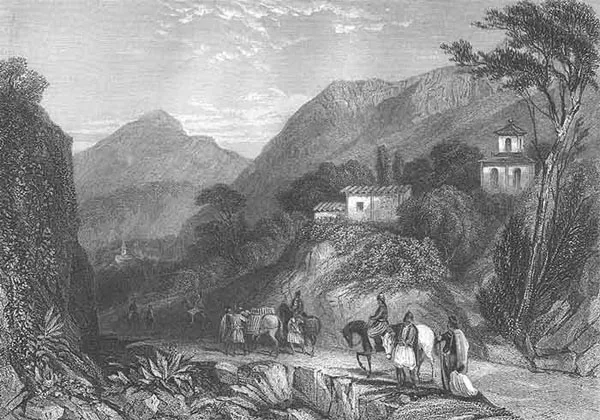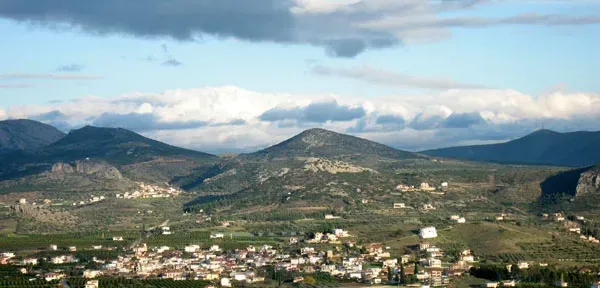Saint Andrianos
26 July 2024
The original name of the village was “Katsigkri”, stemming from the name of a Turk, the “Katsigkr Aga” which, according to the testimonies of locals, was the owner of the entire region. After the Turks, it was renamed “Saint Adrianos” due to the chapel of St. Adrianos surviving even today.
The village is only 5 kilometers from Nafplio and it is built at an altitude of about 80m. Until the creation of the new municipality of Nafplio it belonged to the Municipality of New Tiryns. Now it is a department of the Municipality of Nafplio and according the 2001 census it was found to number 1,020 inhabitants.
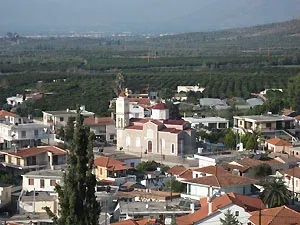
Sights
Near the church of “St. Andrianos” there is a Mycenaean castle, “Paliokastro.” Inside the village there is a striking Tower house, the date of its construction estimated that approximately belongs to the second half of the 18th century. Unfortunately, it has been abandoned and it is under danger of collapse.
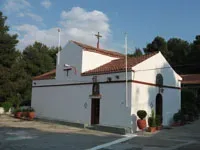
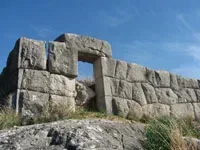
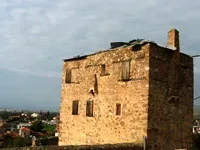
Also it worth visiting the “barrier” of Tirynth, situated in the north-western part of the village and two wells that the villagers enthusiastically claim to be the oldest of the Peloponnese as well.
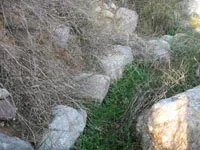
The church of St. Adrianos, on the hill St. Adrianos, is built in 1753. The floor, however, is made of stones testifying perhaps to Byzantine period. Only expert archaeologists will have to testify. Elders of the village claim that there was a wall inscription dated 1400. But the fire has burned that church 2 times, fading traces of date. On the wall, there is a picture indicating that the paintings were made in 1753. At the church a nun, named Zoi, is responsible for caring it all. Regularly, she organizes special liturgies, pies dedicated to Saint Fanourios for example, and overnight liturgies.
Saint Adrianos is considered a miraculous saint and there is a large gathering of Christians to him from all over Greece. Beside the beautiful gate of the church there is a hole, which upon seeing it for the first time, is believed that only a small child can pass through. But up until now, each person who has tried to pass has managed to do so regardless of his weight. It is said that it is very good for the visitor to get through the “hole”.
Very close to the village of St. Adrianos and at the foot of Arachnaio mountain-top is the Monastery of Karakalas. The monastery had a second name “Xirokastelo” but the locals do not call it like that anymore.
“Karakalas”-name seems to have derived from the Turkish translation of the word “Xerokasteli” which is “Kouroukoule.” The corruption of the Turkish word from locals led to the word “Karakalas.” This is the most plausible of the many speculations existing about the name “Karakalas.”
The exact date of the founding year of the monastery of Saint Demetrios is not known, but there is a description of its large property in 1696. This suggests that probably it should have served several centuries.
The role of the monastery in the siege was very important, but also in the years of the struggle, as it was an arsenal of Fighters.
In 1829, it had been recorded that in the monastery there was an abbot (Dionysius), six monks and fifteen employees.
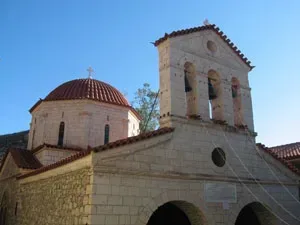
In the early 19th century, it was largely destroyed by fire, while part of its materials that have survived are said to have been used for the construction of the Ottoman mosque, later “State House” in Nafplio city.
In 1928, its property was expropriated and distributed, mainly to pastoralists whose sheep grazed in the area.
In 1934, it merged with the Abbey of Talantio and in 1936 it merged with Abbey of Agnountos and Archangels.
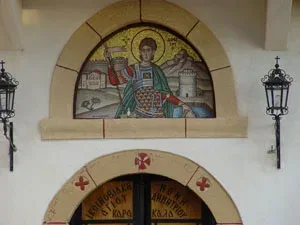
In 1943, unfortunately, the Germans burned the monastery and blew up a part of it. In 1963 the monastery converted to monastery of females and then a new era starts blooming.
It is known according to the General Archive of State, that the architectural character of the monastery is a fortress as a large building complex that could defend itself if need be. The buildings of the monastery were inwardly focused and embellished with arches and large adjacent loggia.
Monastery of St. Demetrios Karakalas
Very close to the village of St. Adrianos and at the foot of Arachnaio mountain-top is the Monastery of Karakalas. The monastery had a second name “Xirokastelo” but the locals do not call it like that anymore.
“Karakalas”-name seems to have derived from the Turkish translation of the word “Xerokasteli” which is “Kouroukoule.” The corruption of the Turkish word from locals led to the word “Karakalas.” This is the most plausible of the many speculations existing about the name “Karakalas.”
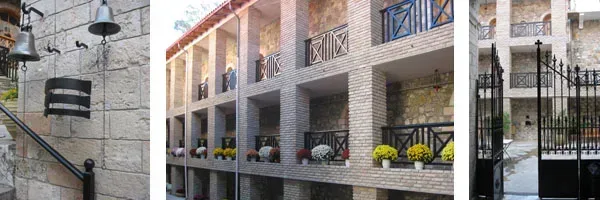
The monastery has five churches such as this of Saint Paraskevi, Saint Eirini Chryssovalantou, Virgin Portaitisas, Saint Nektarios and Saint Ephraim from Syros.
In the centre of the yard area there is the church of the monastery, which was rebuilt in 1871 and it has dimensions of 19 by 8 meters. The catholic church is characterized in terms of its architecture as a registered cruciform with a dome. A ceramic decoration follows the curve of the arches.
Inside the church we witness the painting done by Ch. Boulgaris. The wooden temple and the images of St. Demetrius and Mary (18-19th century) catch the eye of the visitor.
Today, the nuns and the Abbess care to preserve the character of the monastery.
Occupation of Residents
The villagers are mainly engaged in growing oranges because of the suitability of the soil. It also produces potato, which is considered one of the best in Argolida.
The traditional taverns are regarded as a benchmark at Katsigkri where you can taste local fresh produce and pure meats. There are few visitors – family men of the region who prefer it on a daily basis due to the short distance from Nafplio.
Finally, at the village, the Cultural Association “Saint Adrianos” operates with rich work, issuing the two-month newspaper; “The Katsigkri” which does make a great effort to showcase the cultural heritage of the village.
